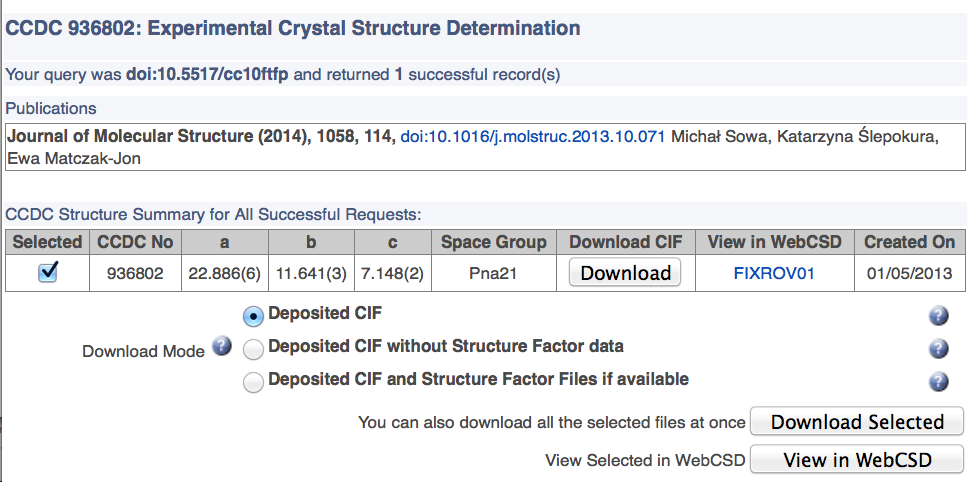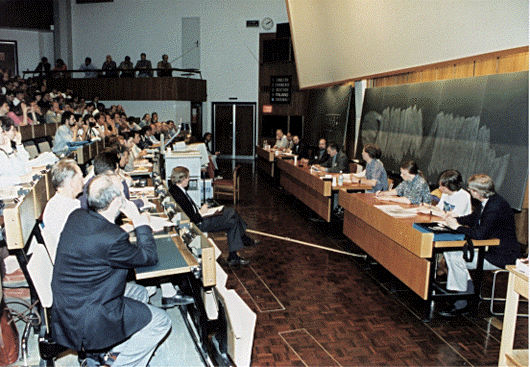OK, you have to be British to understand the pun in the title, a famous comedy skit about four candles. Back to science, and my mention of some crystal data now having a DOI in the previous post. I thought it might be fun to replicate the contents of one of my ACS slides here. Firstly, a DOI is one implementation of a more generic (and quite old) concept known as a Handle. This is one form of a persistent digital identifier.

I have mentioned the Amsterdam manifesto before on these pages. It is worth repeating the eight simple principles: Data should be considered citable products of research. Such data should be held in persistent public repositories. If a publication is based on data not included with the article, those data should be cited in the publication.

A short post this, to remind that today is officially the 25th birthday of the World-Wide-Web, in March 1989. It took five years for a conference around the theme to be organised and below is a photo from that event. (C) CERN Photo From my perspective and perhaps from the 200 or so others present at that closing session, I went back home and told my young children that the world had changed that week. So it has.
My previous post related to the aromatic electrophilic substitution of benzene using as electrophile phenyl diazonium chloride. Another prototypical reaction, and again one where benzene is too inactive for the reaction to occur easily, is the catalyst-free bromination of benzene to give bromobenzene and HBr.
The diazo-coupling reaction dates back to the 1850s (and a close association with Imperial College via the first professor of chemistry there, August von Hofmann) and its mechanism was much studied in the heyday of physical organic chemistry.[cite]10.1021/ja00830a009[/cite] Nick Greeves, purveyor of the excellent ChemTube3D site, contacted me about the transition state (I have commented previously on this aspect of aromatic
A staple of introductory undergraduate teaching in organic chemistry is Markovnikov’s rule, which states: “ the addition of a protic acid HX to an alkene results in the acid hydrogen (H) becoming attached to the carbon with fewer alkyl substituents and the halide (X) group to the carbon with more alkyl substituents ”. Shortly thereafter, students are exposed to the “anti-Markovnikov” addition of borane to e.g.
The potential energy surface for a molecule tells us about how it might react. These surfaces have been charted for thousands of reactions using quantum mechanics, and their basic features are thought to be well understood. Coming across an entirely new feature is rare. So what do you make of the following? The reaction is shown above[cite]10.1039/P19920001709 [/cite], and on the face of it, it looks like a normal pericyclic cascade.
This is the time of year when I deliver two back-2-back lecture courses, and yes I do update and revise the content! I am always on the look-out for nice new examples that illustrate how concepts and patterns in chemistry can be joined up to tell a good story. My attention is currently on conformational analysis;
A game one can play with pericyclic reactions is to ask students to identify what type a given example is. So take for example the reaction below. The alternatives are: A cyclo-elimination reaction (red arrows). Two concurrent electrocyclic ring openings (blue and magenta arrows) Two consecutive electrocyclic ring openings Or could it be a hybrid with characteristics of both the first two?
